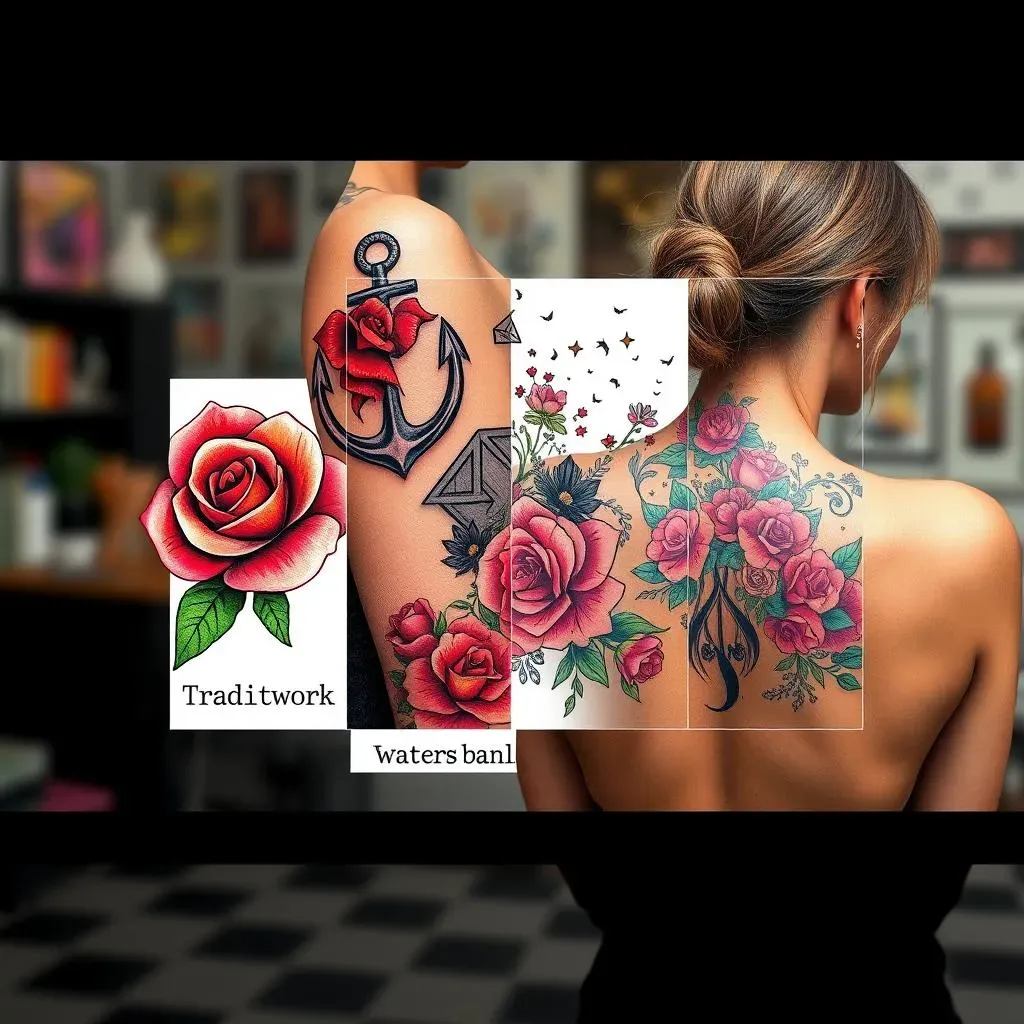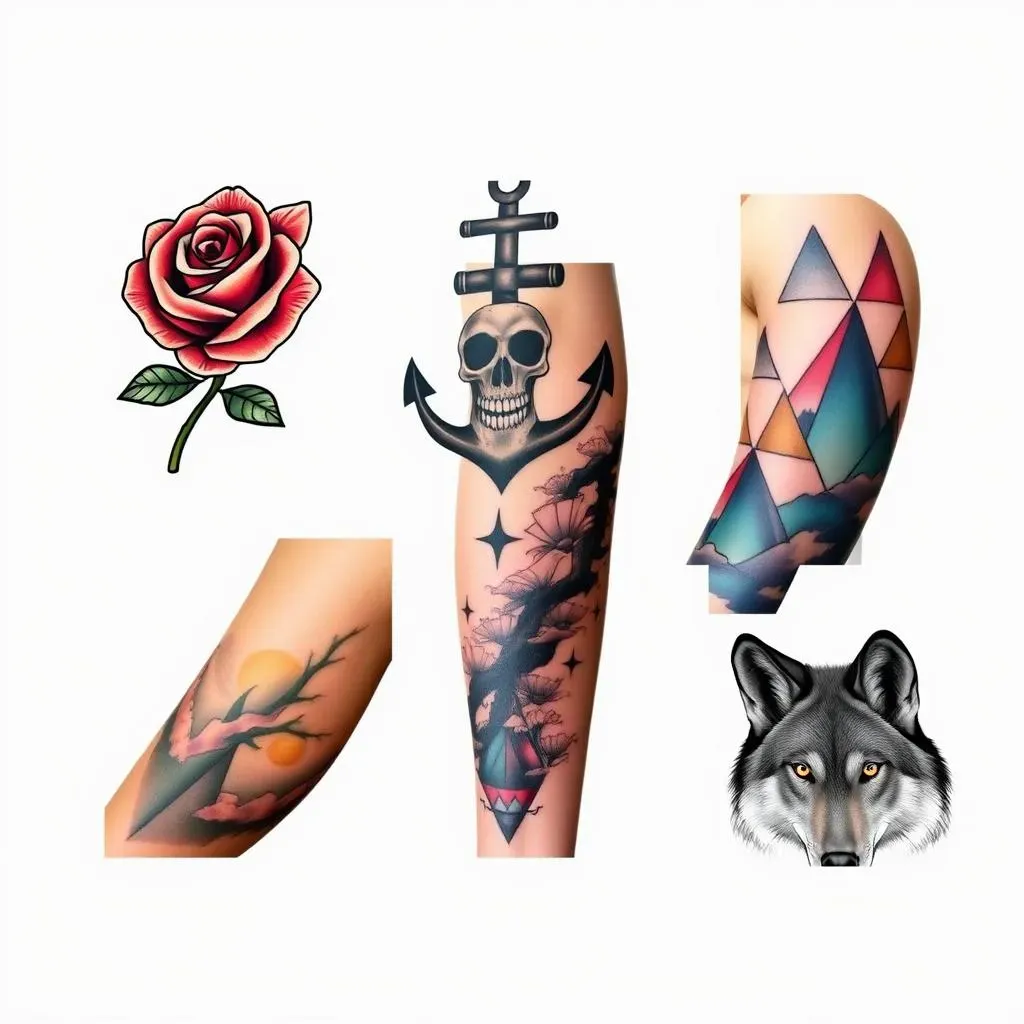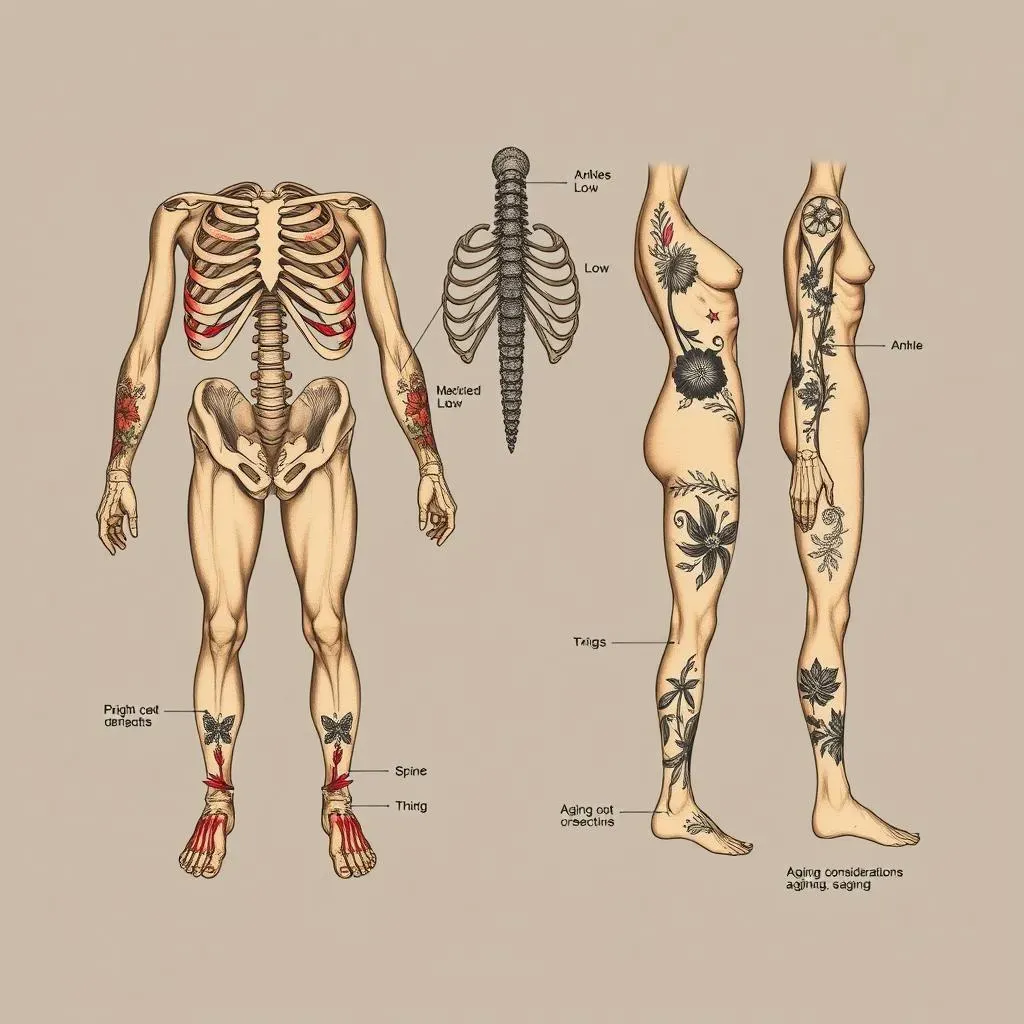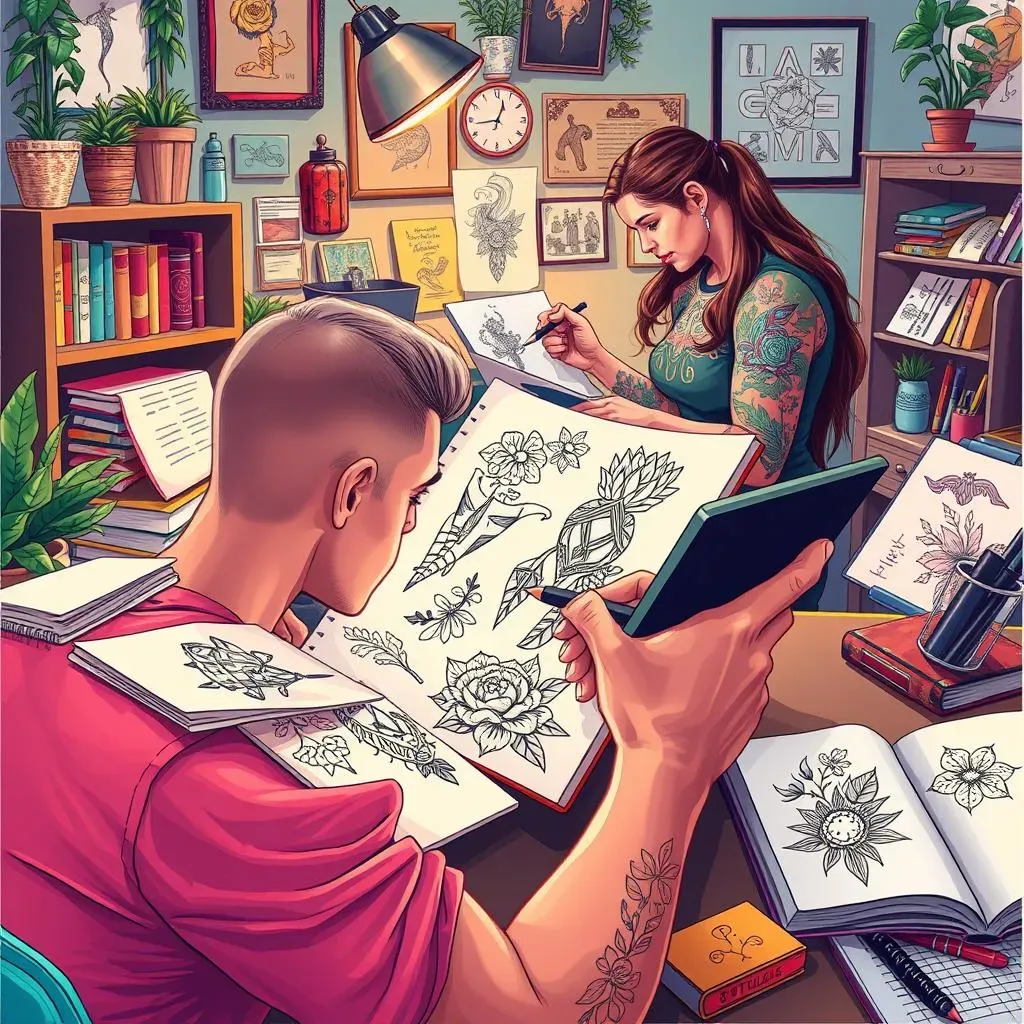Table of Contents
Thinking about getting inked? The world of tattoo designs is vast and varied, offering something for everyone, whether you're a first-timer or a seasoned collector. This article is your compass, guiding you through the exciting journey of finding the perfect design that speaks to you. We'll explore a treasure trove of inspiration, from classic styles to modern trends, and discuss how to choose a design that not only looks amazing but also holds personal meaning.
Finding the Perfect Tattoo Designs: A World of Inspiration
Finding the Perfect Tattoo Designs: A World of Inspiration
Where to Start Your Tattoo Design Journey
so you're ready to get some ink, but the sheer volume of tattoo designs out there is overwhelming, right? Don't sweat it! The first step is to just start browsing. Pinterest is your friend here. Seriously, type in "tattoo ideas" and prepare to lose a few hours. Also, Instagram is a goldmine. Follow some tattoo artists whose style you dig. You'll quickly start to see patterns in what appeals to you.
Think about what kind of vibe you're going for. Are you drawn to delicate, minimalist designs? Or do you prefer bold, colorful pieces that make a statement? Maybe you're into traditional styles like American traditional or Japanese tattoos. No matter what it is, there’s a starting point for everyone.
Unlocking Your Personal Tattoo Style
Now that you've OD'd on visual inspiration, it's time to get real with yourself. What are you passionate about? What experiences have shaped you? Your tattoo can be a reflection of your personality, your hobbies, or even your struggles. Think about symbols, quotes, or imagery that resonate with you on a deep level. Don’t think about trends, think about yourself!
For example, if you're a nature lover, you might consider a floral design or a landscape scene. If you're a musician, maybe a musical note or an instrument. If you've overcome a difficult challenge, you could choose a symbol of strength or resilience. The possibilities are endless!
Navigating the Tattoo Design Landscape
Alright, you've got some ideas brewing. Now, let's talk about different styles. Traditional tattoos are bold and iconic, with thick lines and classic imagery like roses, anchors, and eagles. Blackwork tattoos are all about solid black ink, creating striking geometric patterns or tribal designs. Watercolor tattoos mimic the look of watercolor paintings, with soft, flowing colors and delicate details. Realism tattoos strive to capture a photographic likeness of a person or object.
Each style has its own unique aesthetic and requires a skilled artist to execute properly. Do your research and find an artist who specializes in the style you're interested in. Don't be afraid to ask questions and look at their portfolio. It’s your body, your tattoo, your choice!
Tattoo Style | Description | Key Characteristics |
|---|---|---|
Traditional | Bold, classic designs | Thick lines, bright colors, iconic imagery |
Blackwork | Solid black ink designs | Geometric patterns, tribal motifs |
Watercolor | Soft, flowing colors | Delicate details, painterly effect |
Exploring Different Tattoo Styles and Designs
Exploring Different Tattoo Styles and Designs
so you've got a handle on where to find inspiration. Now let's really dive into the fun part: exploring different tattoo styles and designs. This is where you can let your imagination run wild! Think of it like browsing an art gallery, but instead of paintings, you're looking at potential masterpieces for your skin. From the bold lines of traditional tattoos to the delicate shading of realism, each style offers a unique way to express yourself.
Let’s break down some popular styles. Traditional, also known as "old school," features bold outlines, bright colors, and iconic imagery like roses, anchors, and eagles. These tattoos are timeless and instantly recognizable. Then there's neo-traditional, which builds upon the traditional style with more intricate details and a wider range of colors. If you're into geometric patterns and bold statements, blackwork might be your thing. This style uses solid black ink to create striking designs that are both modern and tribal.
For those who prefer a softer, more ethereal look, watercolor tattoos are a beautiful option. These tattoos mimic the look of watercolor paintings, with delicate washes of color and blurred edges. Just keep in mind that watercolor tattoos may fade more quickly than other styles, so proper aftercare is essential. On the other end of the spectrum, you have realism tattoos, which aim to capture a photographic likeness of a person, animal, or object. Realism tattoos require a highly skilled artist with a keen eye for detail, but the results can be truly breathtaking.
Don't be afraid to mix and match styles to create something truly unique. Maybe you love the bold lines of traditional tattoos but want to incorporate a watercolor effect. Or perhaps you're drawn to blackwork but want to add a touch of realism. The possibilities are endless! The key is to find an artist who is willing to collaborate with you and bring your vision to life. Remember, your tattoo is a reflection of you, so make sure it's something you'll love for years to come.
Tattoo Style | Description | Things to consider |
|---|---|---|
Traditional | Bold outlines, classic imagery | Longevity, timeless appeal |
Neo-Traditional | Intricate details, wider color range | Artist skill, design complexity |
Blackwork | Solid black ink, geometric patterns | Bold statement, skin tone |
Watercolor | Soft colors, blurred edges | Fading potential, aftercare |
Realism | Photographic likeness | Artist skill, detail preservation |
Tattoo Designs: Placement and Considerations
Tattoo Designs: Placement and Considerations
Choosing the Perfect Canvas: Body Placement
Alright, so you've got your dream tattoo design locked down. Awesome! But hold up – where are you actually going to put it? This is a crucial step that often gets overlooked. The placement of your tattoo can drastically impact its overall look and feel. Think of your body as a canvas. Some areas are like prime real estate, while others might be a bit more challenging to work with. For example, a large, intricate design might look stunning on your back or thigh, while a small, delicate tattoo might be better suited for your wrist or ankle.
Consider your lifestyle and personal preferences. Do you want your tattoo to be visible to the world, or do you prefer to keep it hidden? If you work in a conservative environment, you might want to choose a placement that can be easily covered up. On the other hand, if you're proud of your ink and want to show it off, go for a more prominent location. There's no right or wrong answer here – it all comes down to what makes you feel comfortable and confident.
Pain, Pain, Go Away: Understanding Pain Levels
Let's be real – getting a tattoo involves needles, and needles can be uncomfortable. But before you freak out, it's important to understand that pain levels vary depending on the placement. Some areas of the body are more sensitive than others due to the amount of nerve endings and the thickness of the skin. Bony areas like the ribs, spine, and ankles tend to be more painful, while fleshy areas like the thighs, upper arms, and buttocks are generally less sensitive.
If you're worried about the pain, don't be afraid to ask your tattoo artist for advice. They can recommend numbing creams or other techniques to help minimize discomfort. You can also break up your tattoo sessions into shorter intervals to give yourself a break. Remember, the pain is temporary, but the tattoo is forever (or at least a very long time), so it's worth enduring a little discomfort to get the perfect piece.
Long-Term Vision: Considering Aging and Skin Changes
so you've chosen your design and placement, and you're prepared for the pain. But have you thought about the future? Our bodies change over time, and those changes can affect the appearance of your tattoo. Weight gain or loss, pregnancy, and even the natural aging process can cause the skin to stretch, sag, or wrinkle. These changes can distort your tattoo, making it look blurry or misshapen. That is why you should be mindful of it. It's not a matter of "if", it's a matter of "when".
To minimize the impact of aging on your tattoo, choose a placement that is less prone to stretching or sagging. Areas like the upper back, shoulders, and calves tend to hold their shape better than areas like the stomach, breasts, and inner thighs. You can also talk to your tattoo artist about design techniques that can help your tattoo age gracefully. Bold lines and simple designs tend to hold up better over time than intricate details and delicate shading. And of course, proper aftercare and sun protection are essential for keeping your tattoo looking its best for years to come.
Placement Area | Pain Level | Aging Considerations |
|---|---|---|
Ribs | High | Skin stretching, distortion |
Spine | High | Skin stretching, potential for misalignment |
Ankles | High | Skin stretching, potential for fading |
Thighs | Low to Medium | Weight gain/loss, cellulite |
Upper Arms | Low to Medium | Muscle gain/loss, skin sagging |
Creating Your Own Unique Tattoo Designs
Creating Your Own Unique Tattoo Designs
Brainstorming and Sketching: From Idea to Paper
Alright, so you're itching for a tattoo design that's 100% you, huh? Forget flash art and generic symbols. Let's get those creative juices flowing! The first step is brainstorming. Grab a notebook and just start jotting down anything and everything that inspires you. Think about your passions, your beliefs, your favorite things in the world. No idea is too silly or too out there at this stage. Do you love space? Write it down. Are you obsessed with your pet iguana? Write it down. Seriously, anything goes.
Once you've got a decent list, start sketching! Don't worry if you're not a professional artist. These are just rough drafts to get your ideas down on paper. Experiment with different compositions, shapes, and styles. Try combining different elements to create something truly unique. Maybe you can incorporate the iguana into a constellation-themed design! The point is to play around and see what emerges. Don't overthink it, just let your imagination guide you.
Collaborating with Your Artist: Turning Vision into Reality
So, you've got a sketchbook full of ideas, but you're not quite sure how to turn them into a tattoo-ready design? That's where your tattoo artist comes in! Find an artist whose style you admire and who is open to collaboration. Don't be afraid to share your sketches and explain your vision. A good artist will be able to take your ideas and refine them, offering suggestions and technical expertise to create a design that is both beautiful and tattooable.
Remember, tattooing is a collaborative process. Your artist is not just a technician, they're an artist in their own right. Trust their judgment and be open to their suggestions. They can help you choose the right size, placement, and color palette to make your tattoo design truly shine. And most importantly, make sure you're both on the same page before the needle hits your skin! Clear communication is key to a successful and satisfying tattoo experience.
Step | Description | Tips |
|---|---|---|
Brainstorming | Generate ideas and inspiration | Write down everything, no matter how silly |
Sketching | Visualize your ideas on paper | Experiment with different compositions and styles |
Collaboration | Work with your artist to refine your design | Communicate clearly and trust their expertise |
Embrace Your Ink: The Journey of Tattoo Designs
Your tattoo journey is a deeply personal one. Armed with inspiration, knowledge of styles, placement considerations, and perhaps even the spark to create your own design, you're ready to take the next step. Remember, a tattoo is more than just ink; it's a story, a symbol, a piece of you etched onto your skin. Embrace the process, choose wisely, and wear your art with pride.